Expressive arts therapy can also reduce stress, alleviate symptoms of anxiety and depression, and improve overall mental well-being. Individuals can find new ways to cope with challenges and build resilience through creative expression. Collaborative projects between artists and addiction specialists are on the rise, bridging the gap between creative expression and scientific understanding.
- Engaging in art helps individuals process complex emotions related to addiction, like fear and trauma.
- Art therapy is an applied psychological theory that works well as a supplement with psychotherapy, behavior modification treatment, and positive psychology.
- One such example is Keith Haring’s “Crack is Wack” mural, created in 1986 at the height of the crack cocaine epidemic in New York City.
- This stress relief is vital in addiction recovery, where managing stress effectively reduces the risk of relapse.
Therapeutic Effects: Art as a Means of Personal Expression

The goal is to enjoy the process and promote self-expression, not produce a certain product. We used two dependent variables for our analyses – art therapy and music therapy. Interviewees indicated whether or not these approaches were used in the organization. Treatment programs that used art therapy or music therapy, respectively, were coded “1” and non-users were coded “0” on the dichotomous variables. Extant research on the benefits of art therapy is widely documented, although the research designs limit conclusive generalization.
How does art therapy support addiction recovery?
By addressing emotional wounds, reducing stress, and promoting self-awareness, art therapy empowers individuals to navigate the challenges of addiction recovery with resilience and hope. 1 Trained art therapists hold a specialized degree in mental health treatment, and have completed additional certifications in art therapy to help use art as a medium for healing. Body outline drawing is an art therapy exercise that helps individuals in addiction recovery develop a greater sense of self-awareness and connection to their physical and emotional states. With the guidance of trained art therapy practitioners, these exercises can be a valuable tool in supporting long-term recovery and personal growth.
Sculpt Your Challenges
Many individuals with addiction suffer from trauma, which often drives them to substance use. Art therapy allows trauma victims to express and release long-term guilt and trapped emotions, offering clearer insights into their past experiences. Collie et al. 2006in “Art Therapy for Trauma and Addiction” published by the Journal of Trauma & Dissociation noted that art therapy is particularly effective when combined with traditional communication therapy.
How Art Therapy Facilitates Addiction Recovery

Art therapy honors the transformational capacity of creative expression and healing through artful connection. It has been used for hundreds of years to help people cope with anxiety, eating disorders, cancer, and psychological challenges. It can also help manage more challenging mental health conditions like schizophrenia, post-traumatic stress disorder, and bipolar disorder. Art therapy allows for people to paint, draw, take pictures, sketch, sculpt, or doodle into improved emotional and spiritual states. Facilitators and art therapists are present in classes or centers to guide students to explore their emotions and improve mental health.
The canvas becomes a reflection of transformation, illustrating that, indeed, every artist was first an amateur, bravely navigating their way to a masterpiece of sober living. During Sober Saturday, participants are encouraged to share their stories, struggles, and triumphs with art as a medium of expression. Guided by skilled instructors, attendees embark on a creative journey that not only produces beautiful artwork but also serves as a testament to their resilience and commitment to sobriety. The capacity for art to nurture communication skills also plays a significant role, allowing for deeper connections even in situations where words fail. As such, its historical roots not only underscore its significance but also hint at the bright future it holds in therapeutic practices, promising profound benefits for emotional and psychological health. Art therapy has proven effective in addressing a variety Alcoholics Anonymous of psychological issues.


Individuals might create sculptures representing their addiction, their recovery journey, or their vision for their future selves. The three-dimensional aspect of sculpture allows for a more holistic exploration of complex emotions and experiences. Art therapy is used to help these individuals express their thoughts and feelings through the less confrontational path of creativity. With the support of the art therapist, clients can identify previously unrecognized feelings and themes that show up in their artwork and then process them in a creative and nonjudgmental environment. Our Art Corner can serve as a way for art teachers, art therapists, and people in recovery to find art classes, participate in or organize community events, and even browse art created by people just like you.
Emotional health benefits
Alongside this, you might make a collage representing your life story – the highs, the lows, and the experiences that have shaped you. Seeing a physical artifact of your progress fortifies the belief in your ability to change and heal. The simple repetition involved in molding and shaping can provide comfort and a sense of control, which is invaluable during the uncertain journey of recovery. The choices made during this process, be it the texture, size, or shape, often symbolize personal growth and the rebuilding of a fractured sense of self. It’s common to lose track of time as you get immersed in the process, a phenomenon that allows for a temporary respite from the struggles of recovery.

Emotional Release
- These raw, intimate portraits challenge viewers to look beyond stereotypes and see the humanity in those struggling with addiction.
- Incorporating art therapy into addiction recovery is about harnessing the power of creativity to mend the mind and spirit.
- We use science-backed approaches to resolve negative emotions, including art therapy activities.
- The thoughts you’re having can be difficult to say out loud, and you may be unsure how to accurately depict how you’re feeling, but art therapy makes the process easier while still reaching the intended goal.
Now, let’s explore ten art therapy prompts that can aid in the journey of addiction recovery. There are plenty of other recovery art therapy ideas out there that you can enjoy. Sometimes it’s just as simple as picking up a pencil and drawing whatever comes to your mind. Incorporating art therapy into your recovery is not about becoming an artist; it’s about finding a new means to express and understand your emotions, fostering a deeper healing process.
Impact on Emotional Processing
For example, a series of self-portraits created at regular intervals can provide a powerful visual representation of personal growth and transformation. Let’s art therapy for addiction explore some specific art therapy activities that have proven effective in addiction recovery settings. Mason is detail oriented, organized, efficient oral and written communicator, and passionate about creating a positive workplace for our staff and an excellent recovery environment for our clients.

Leave a Reply
You must be logged in to post a comment.